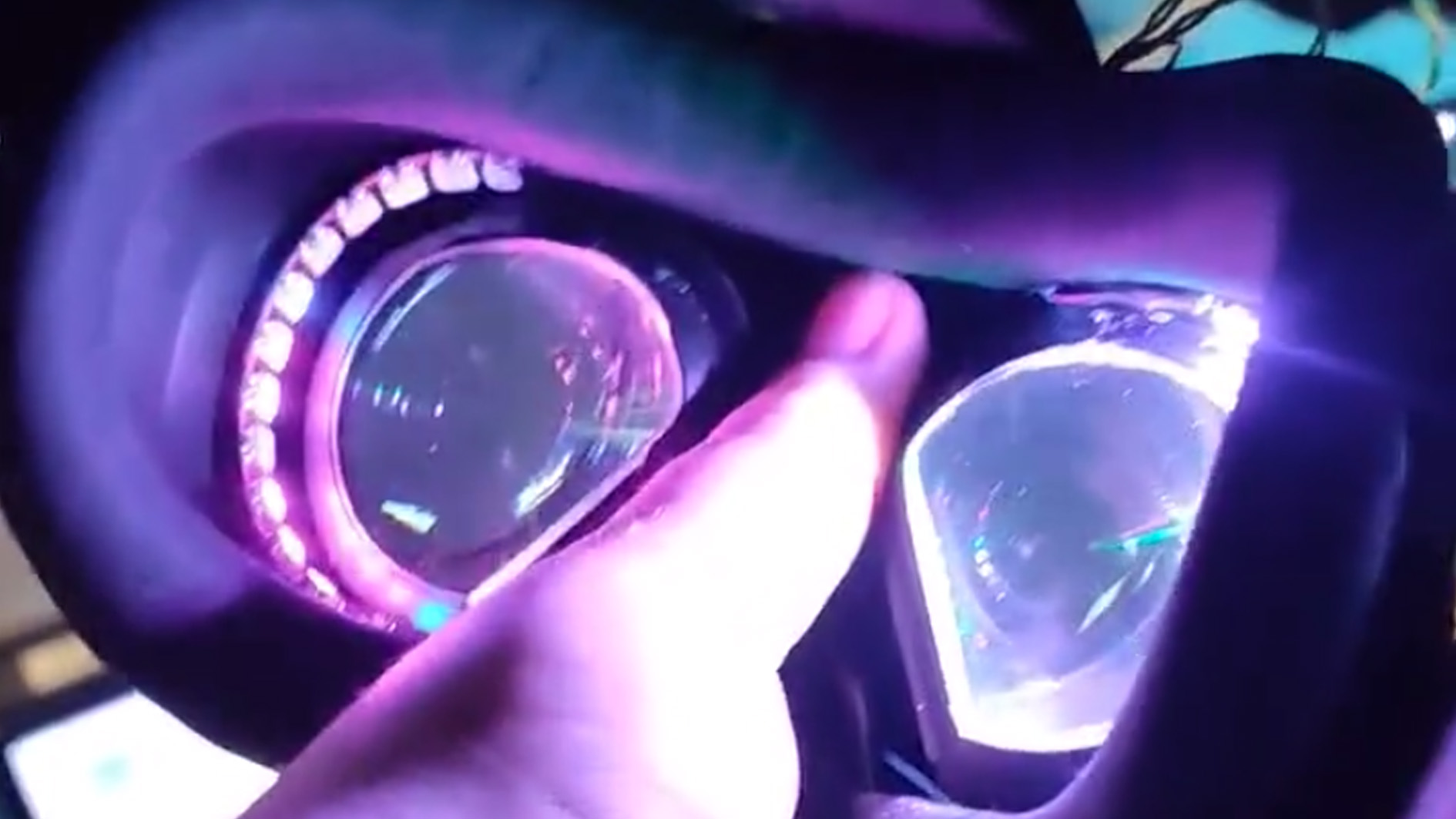[ad_1]

VR has develop into extra mainstream than I ever imagined it could, again once I first bought my fingers on an unique Oculus Rift dev equipment. I do know individuals who aren’t actually into video games however who nonetheless personal a Quest 2 headset (opens in new tab) for Beat Saber shenanigans (opens in new tab). For many who are deep into the VR panorama, you have bought high-end choices just like the Pimax headsets with expanded fields of view. (opens in new tab) However even with Pimax’s nice trade-in offers (opens in new tab), not everybody is able to slap that form of cash on a VR headset.
For these searching for that broad field-of-view feeling on a finances, one DIY fanatic may simply have you ever lined. ShodaVR (opens in new tab) on Twitter (noticed by Combined-Information) has devised an impact that mimics a wider vary of imaginative and prescient on their Vive headset. This hack appears like a simple one, and it may be tried out by most individuals with a VR headset.
All of the impact requires is an array of LEDs positioned contained in the headset. These LEDs are then programmed to imitate the border lights that you simply’re seeing. It is the identical means ambient lighting works along side TVs and screens, and even comparatively low cost setups like Govee Dreamlights (opens in new tab) could make an enormous distinction. In a room it helps to color your setting with the sunshine you’d have on this planet in your display screen and affords a higher sense of immersion. In case you’ve skilled ambient lighting setup you understand how efficient this trick could be.
Shoda has posted a number of movies of their hacked setup engaged on Twitter, together with a blind check from their partner (opens in new tab). Even with the present comparatively easy setup it appears to be leaving an impression. The subsequent steps are to get some diffusing taking place within the headset, in addition to 3D printing an insert. Shoda is even gauging curiosity to see if it is value creating the accent additional.
Given how effectively this appears to work it is nearly a thriller why headset makers have not already applied this sort of tech. Further lights within the headset might add to the majority, however given Shoda was capable of energy this from the Vive itself, including comparatively little in perceived heft, it is a curious one. Particularly given LEDs are low cost, light-weight, and low energy drawers.
It appears like Shoda has put a whole lot of work into this construct, making a pleasant clear finish outcome which is probably going higher than what I may ever obtain. The execution is already wanting fairly skilled, however maybe extra might be found because the prototyping continues.
My “VR Ambilight” mock up is completed, it feels ABSOLUTELY INCREDIBLE, the “Pretend FOV” enhance is so trippy, I simply have to diffuse the little higher then it is time to 3D print a totally enclosed facial interface. @Thrilluwu Orion membership pops with this! Making one for the Index now. pic.twitter.com/p4MktC3p0hFebruary 18, 2023
Hopefully that is as simple an implementation because it appears as a result of it positive appears like a cool one. I might like to shove some LEDs into my Quest headset to get that added dose of immersion whereas in VR. I are inclined to run mine by way of the pc and thus may use display screen mirroring software program to manage the notes. Nonetheless, as Shoda notes, getting standalone Quest video games could be harder and could be on the backburner for now.
If all of it works out this could be one of many least expensive and best methods to improve your VR headset. It might even lead technique to additional developments. Shoda talks about cool recreation results that could possibly be applied like having it flash purple across the exterior when you’re being attacked from behind. These would possible have to be arrange on the sport developer finish of issues, but when these ambient lighting LEDs take off, who is aware of.
[ad_2]
Source link


